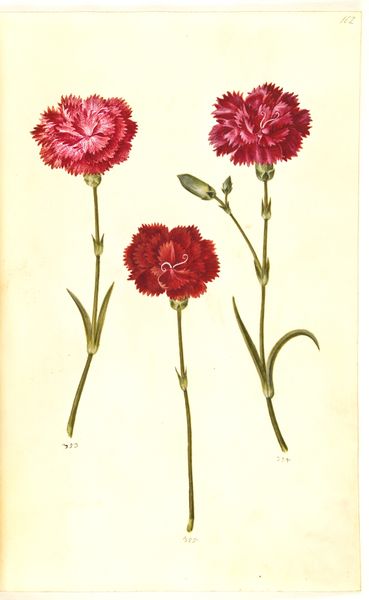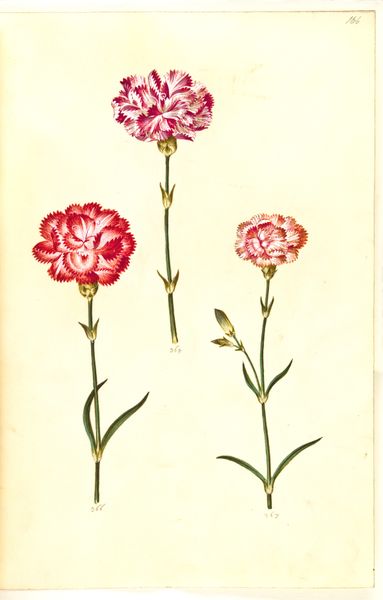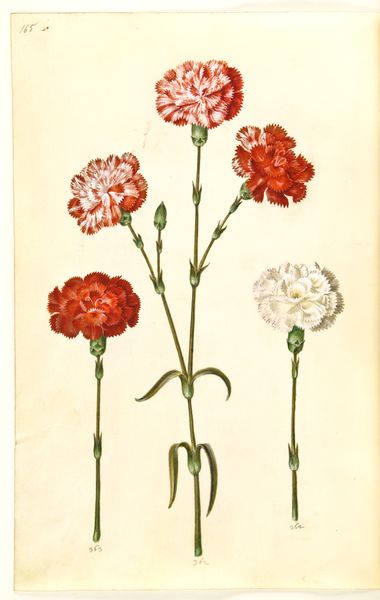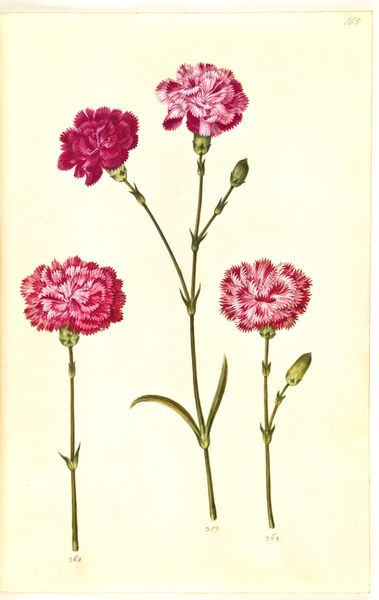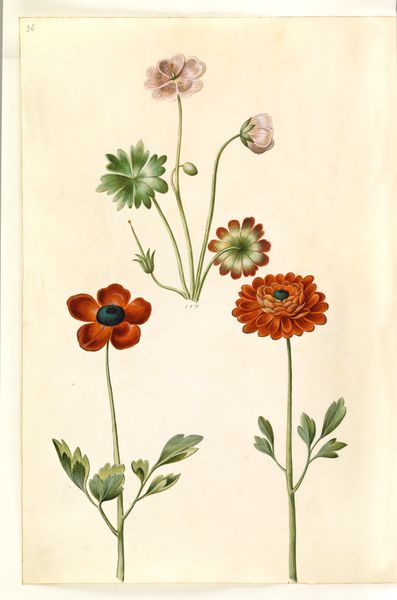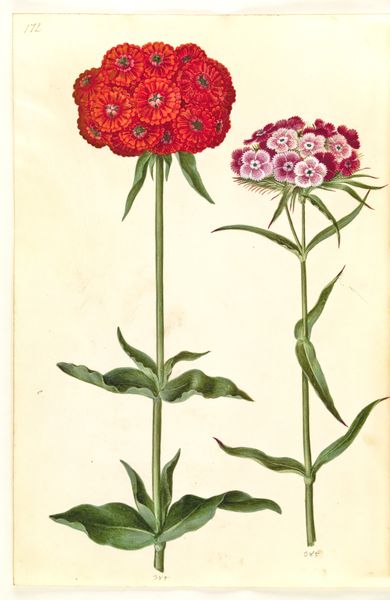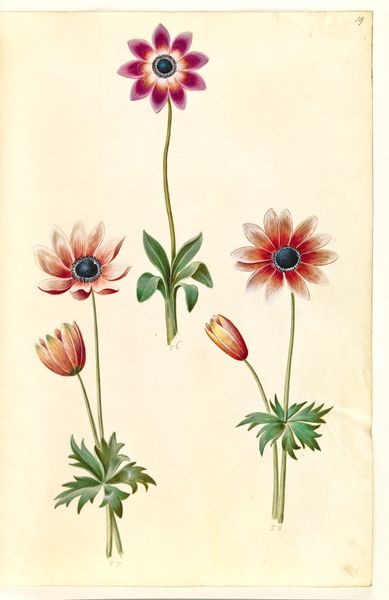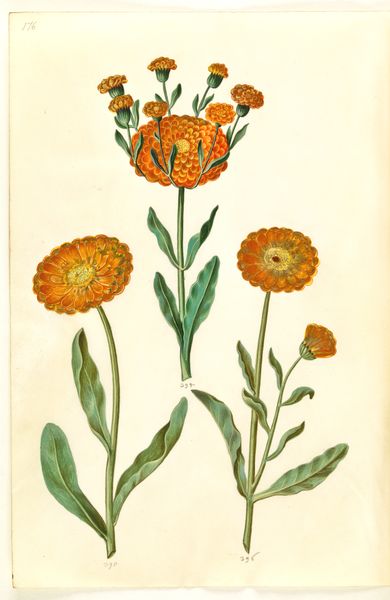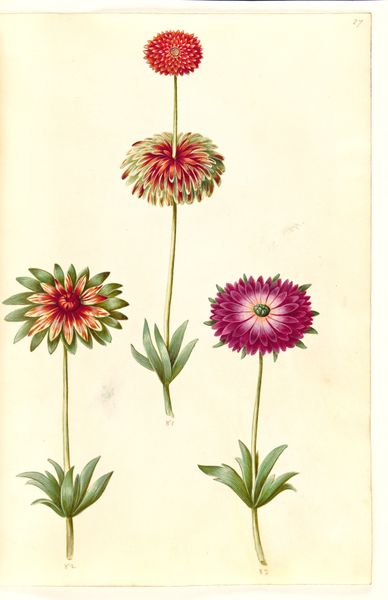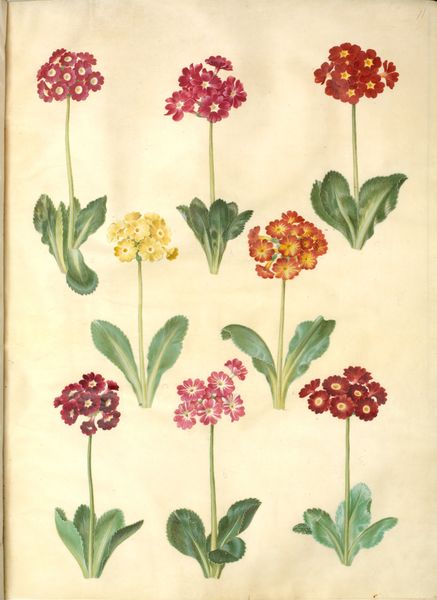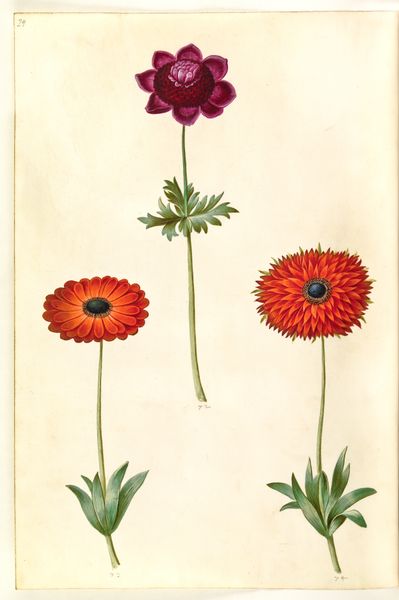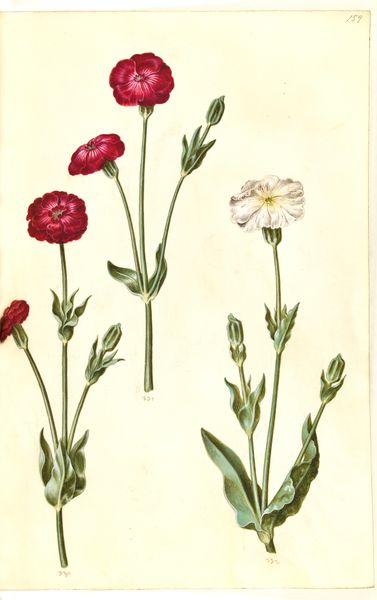
drawing, gouache, watercolor
#
drawing
#
gouache
#
11_renaissance
#
watercolor
#
watercolour illustration
#
botanical art
Dimensions: 375 mm (height) x 265 mm (width) x 85 mm (depth) (monteringsmaal), 358 mm (height) x 250 mm (width) (bladmaal)
Hans Simon Holtzbecker rendered these carnations with watercolor, a medium that captures their delicate beauty. In Holtzbecker's time, the carnation was more than just a flower; it was a symbol of love and betrothal, especially in Northern Europe. But, the symbolism of the carnation hardly begins there. Consider the visual echo of the carnation's form in the halos of Renaissance paintings—a connection to the divine. In the Christian tradition, the carnation is associated with the Virgin Mary. Likewise, its color takes on meaning. The passionate red hue may allude to Christ’s blood and, by association, to themes of suffering and love. From antiquity to the Renaissance, and even now, flowers are deeply rooted in our collective memory, their beauty capable of triggering profound emotions. Just as the Greeks crowned victors with laurel, we find ourselves drawn to the carnation’s visual power, its ability to embody complex ideas about love, sacrifice, and beauty. This flower and its likeness, immortalized by Holtzbecker, continue their symbolic journey through time.
Comments
No comments
Be the first to comment and join the conversation on the ultimate creative platform.
